The Bioneers Conference happened in Berkeley on April 4-6th. Bioneers is an organization founded in 1990 by social entrepreneurs Kenny Ausubel and Nina Simons. Their intention is to bring together social and scientific innovators who present solutions for the challenging climate shit show that the planet is facing. I was able to attend the Thursday and Friday sessions. I cried. I laughed. I grew starry-eyed in the presence of so many intelligent and dynamic humans under one roof. I cried again. Here are some reasons for action and hope that I learned at Bioneers.
All Photography by Vita Hewitt
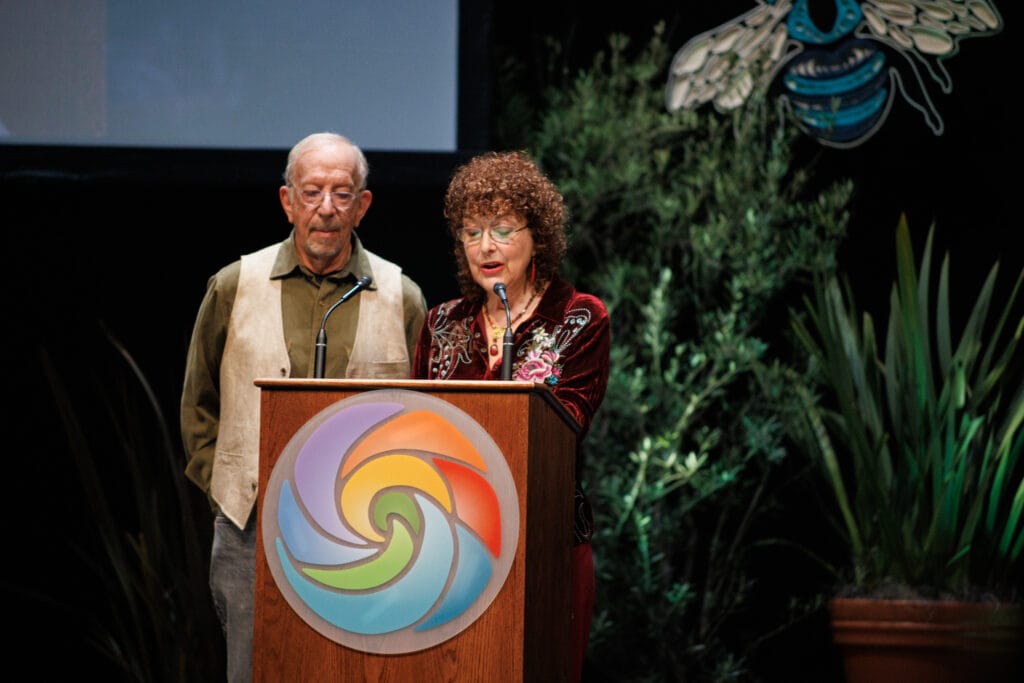
Kenny Ausubel and Nina Simons at the beginning of the Bioneers Conference.
Cultural Diversity is as important as Biodiversity
Shane Gero, Founder of the Dominica Sperm Whale project, had spent thousands of hours observing female-led Sperm Whale clans. They make up the largest cultural group outside of humanity. Every clan has their own culture and language specific to the place they are from. To lose a family is to lose generations of culture and knowledge on how to succeed and survive. Gero had concluded that while biodiversity is important, conservation must also include cultural diversity.
To learn more: http://www.thespermwhaleproject.org/about#desc

After the Indigenous People’s Sunrise on Alcatraz in 2018.
There is a Proposed Cultural Center to Honor the Indians of All Tribes Occupation of Alcatraz.
In 1969 Alcatraz was taken over by a group of Indigenous Peoples. This 19-month long protest was led by Richard Oakes and LaNada War Jack. The protest group went by the name Indians of All Tribes (IAT). IAT claimed that under the treaty of Fort Laramie between the U.S. And the Lakota tribe all retired, abandoned, or out-of-use federal land was to be returned to the Indians who once occupied it. Alcatraz was closed in 1963 and under these conditions fit the bill. It became a symbol of resistance and hope.
Every year there is an Un-Thanksgiving sunrise ceremony held in part to honor the island’s occupation by IAT. It is worth respectfully attending. Currently IAT and others are asking U.S. Secretary of the Interior Deb Haaland and the National Park Service to establish a cultural center on Alcatraz. The cultural center would be a place of education on the true history of Native California tribes including the 1969 occupation. One hope is to refashion the lighthouse into a Thunderbird totem in honor of the symbolic meaning of power, presence, and protection. The idea that this island, which was once a place of misery and incarceration, could be turned into a symbol of freedom and education is a powerful one.
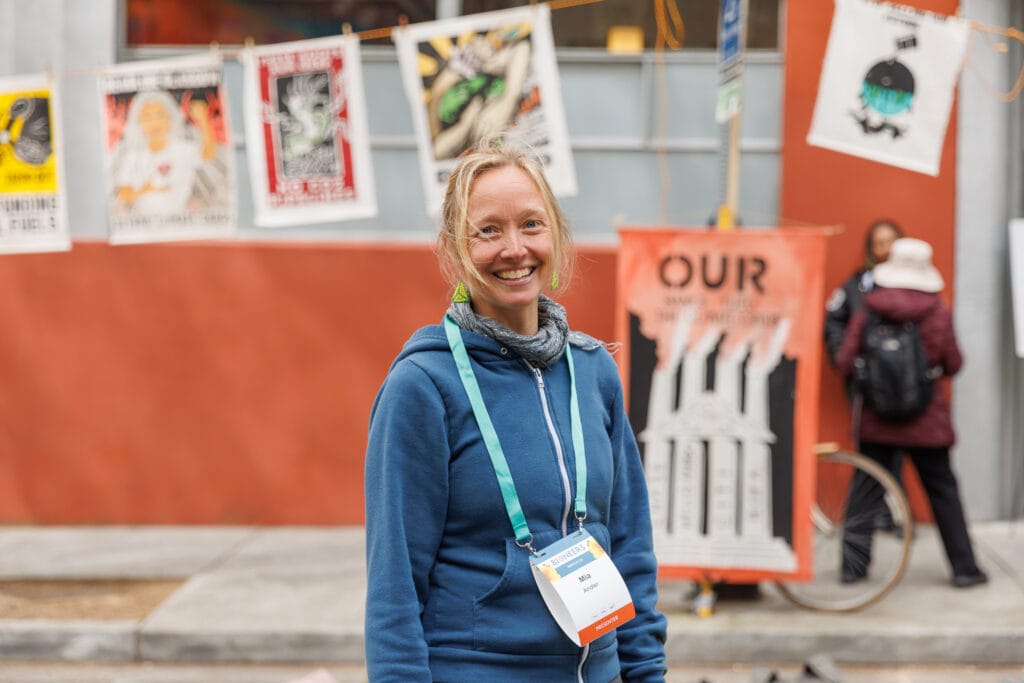
Mia Andler author of The Bay Area Forager stands in front of posters created by local artists protesting the effects of Climate Change.
Mia Andler the Finnish Forager of the Bay Area
Mia Andler, author of The Bay Area Forager: Your Guide to Edible Wild Plants of the San Francisco Bay Area was there to give a talk. It was a book that I have read and cherished. Mia is dedicated to creating a meaningful connection to nature. She is interested in unique food systems and foraging and how we can find a different way to source our food. “I’m really excited about educating people about the foods that are already here available to us,” Mia said. She also runs Vilda, a non-profit nature connection program for children.
Learn more about her work here:https://www.thisferalfinn.com
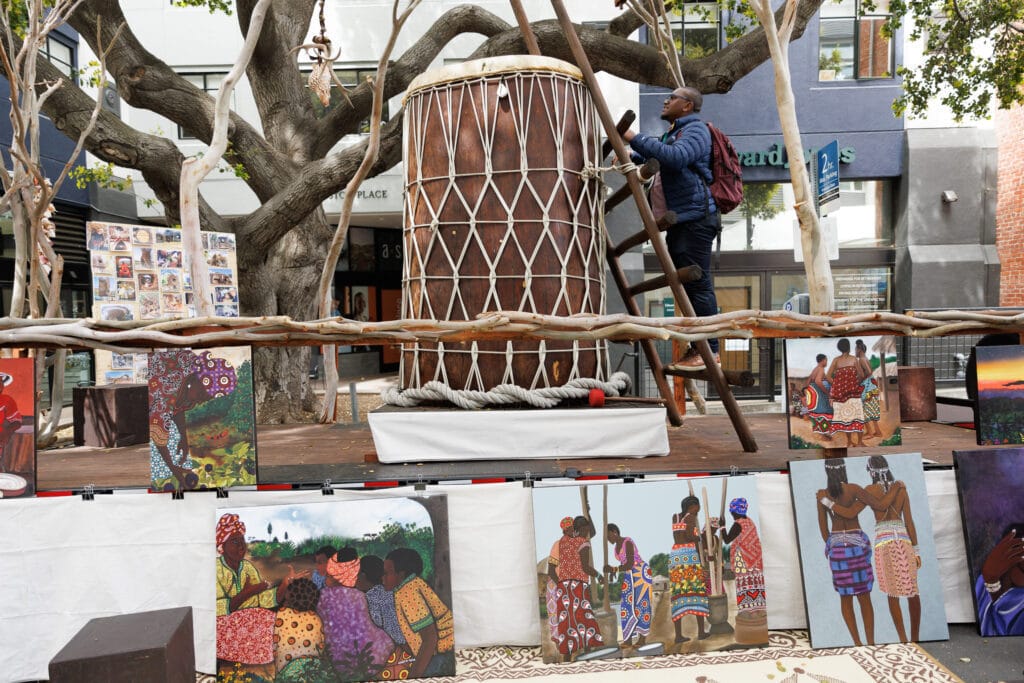
A drum created by a piece of 1,500-year-old recycled wood by artist Jayson Fann.
The Spirit Nest Sculptures by Jayson Fann
A large drum and a small spirit nest sculpture created from skillfully woven branches by artist Jayson Fann were on display. The drum was created from a 1,500-year-old piece of recycled wood from the Big Sur Canyon. It was originally built for a gathering with The International Council of Thirteen Indigenous Grandmothers. This is an international alliance of indigenous female elders that focuses on issues regarding the environment and human rights. Jayson will be traveling and building spirit nests across North America in 2023 to inspire story telling and collaboration. He hopes it will be a journey connecting communities, artists, educators, and stewards of the land.
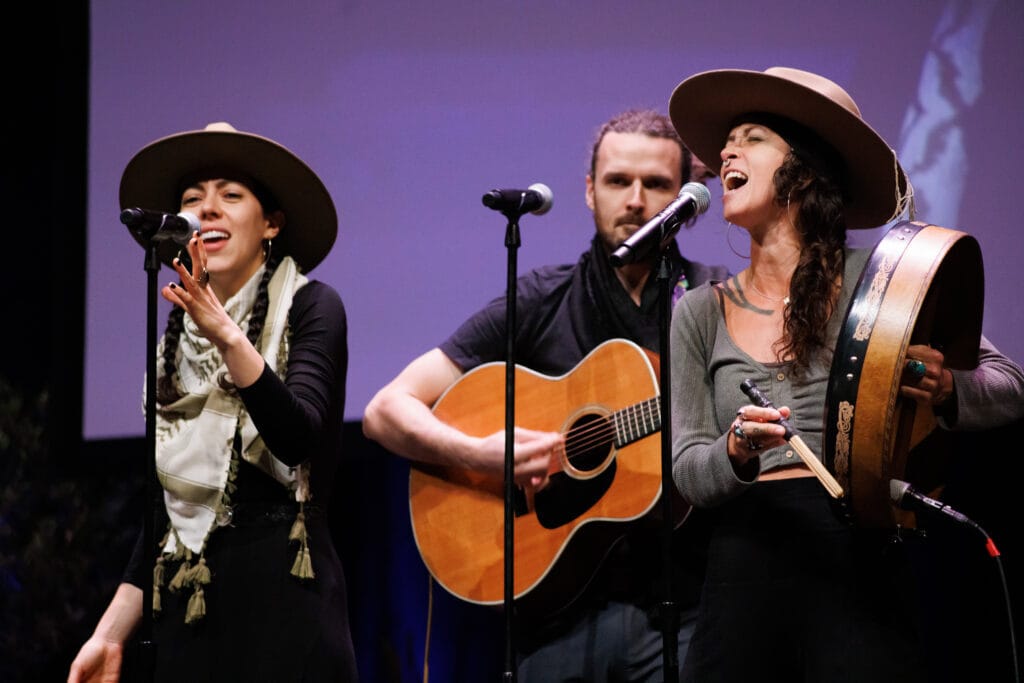
Rising Appalachia performs at the Bioneers.
Rising Appalachia and The Slow Music Movement
Leah and Chloe Smith started the band Rising Appalachia. They are musicians and activists with roots in the Deep South. The topics in their songs range from feminism, the climate crisis, the prison industrial complex and other pertinent causes. They are also a major part of The Slow Music Movement. I wasn’t clear on what this was. Leah clarified it for me. “The Slow Music Movement is a hope to see the idea of a more sustainable relationship to music and performance and craft and artistry. . . that makes more long-standing relationship with place and community and culture and craft.”
If you are interested in learning more you can watch their TED talk https://www.youtube.com/watch?v=mVaA-VUlgBc
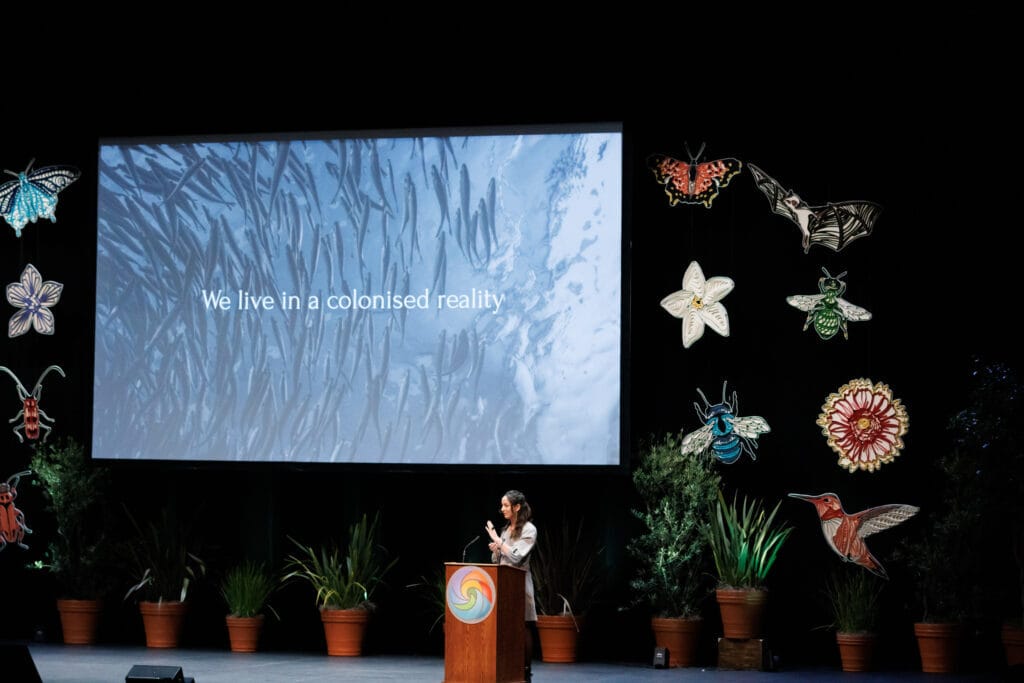
Erin Matariki Carr breaks down the reasons colonialism persists.
New Zealand has Granted Human Rights to a National Park, A River and a Mountain.
These places, which are sacred to the Maori people (who know their home islands as Aotearoa) were granted legal personhood. Erin Matariki Carr of the RIVER Collective gave a fascinating talk about the process of how this happened. Te Urewera National Park was the first to be recognized as a living being in the eyes of the law in 2014. It may see far-fetched, but not if you think that corporations have been able to patent living organisms for profit since 1980.
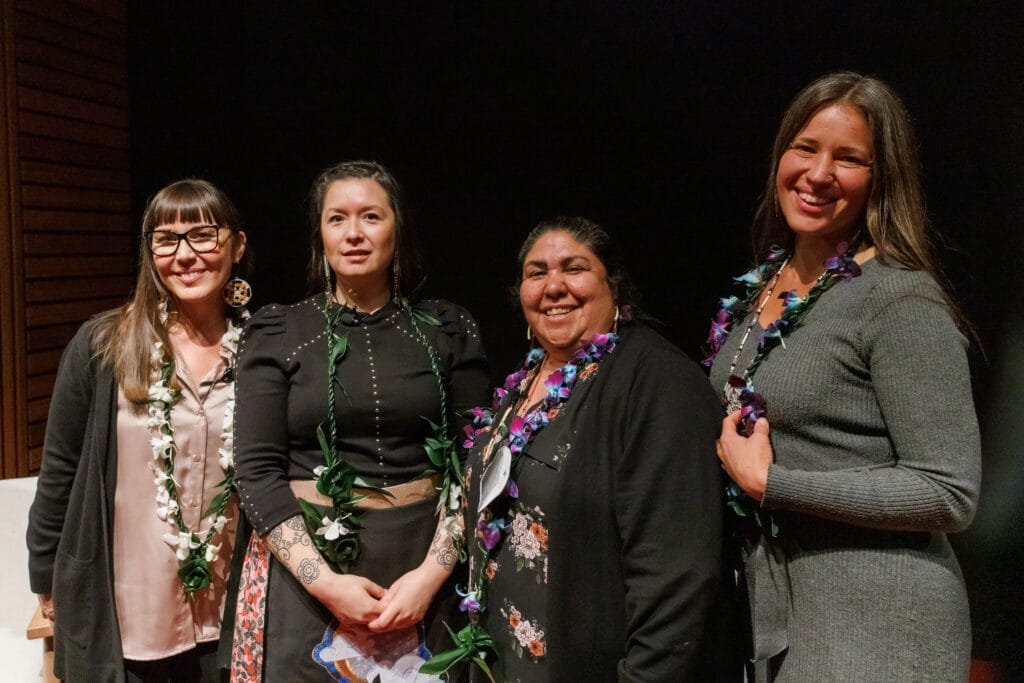
The Buzzword is #LANDBACK
The Land Back movement hopes to restore decision-making power over land to Indigenous communities. It does not seek to displace current residents but rather to show that Indigenous governance is beneficial and sustainable for public spaces.
Cara Romero moderated a panel with Corrina Gould of the Sogorea Te’ Land Trust, Kawenniiosta Jock, Kanien’kehá:ka Wolf Clan of The Waterfall Unity Alliance and PennElys Droz with NDN Collective. These women are incredible stewards of the land that they live on. Sogorea Te’ Land Trust is based in the San Francisco Bay Area. They are interested in finding mutually respectful ways of returning Indigenous land to Indigenous People. Recently this group celebrated the return of the land formerly known as Sequoia Point in Oakland to their care.
To learn more: https://sogoreate-landtrust.org/about/
Chemistry Can be Green Too!
When Kenny Ausubel introduced John Warner to the crowd he said “John puts the molecule on the couch and asks ‘What would you like to be?” I have to say that I have never felt so immediately comfortable around a known chemist.
Warner began by saying that natural biological processes are better at doing chemistry than humans because they are more efficient and more sustainable. Then he showed us how Biology breaks and makes at the same time. Materials are naturally able to find their way back to use in fully sustainable ways. He argued that if we want to emulate nature we need a positive relationship with chemistry. He is looking to change the shape of chemistry to be more in collaboration with nature.
His organization is https://www.beyondbenign.org
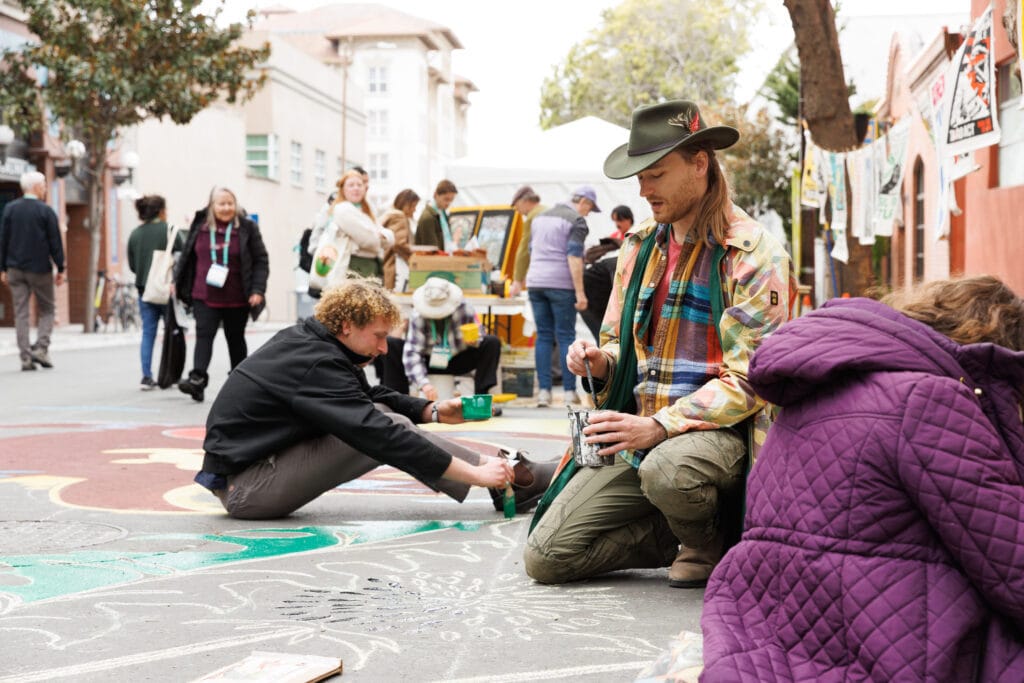
Artists and guests at Bioneers create chalk drawings.
The post 7 Reasons the World May Not be Doomed: The Bioneers Conference appeared first on Broke-Ass Stuart's Website.










